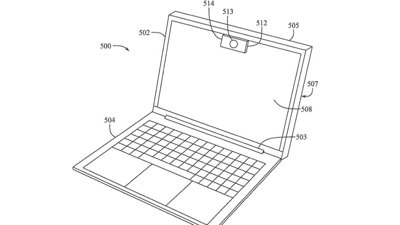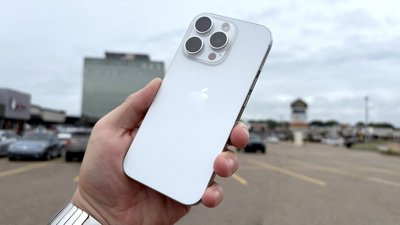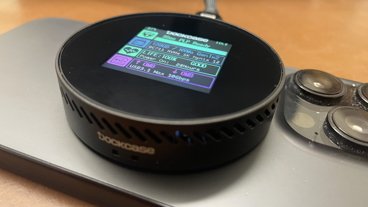Apple is continuing to research methods of determining how a user is wearing headphones, to assist in interpreting touch gestures properly, regardless of how the headphones are worn on a user's head.
Currently-available headphones can potentially have controls onboard, especially with wireless-based models, which have to offer on-headset controls instead of relying on an in-line control system. This does generally require the presence of physical buttons, which may be unsightly or interrupt an otherwise clean design.
Physical buttons would be needed, in order to provide a tactile way for users to distinguish buttons from each other, based on the position or shape, without needing to take off the headphones or to see the buttons. This blind interaction situation means it is very difficult to implement any touchscreen or touch panel-based control schemes, as it would typically rely on users being able to see the virtual buttons.
Complicating matters further is the myriad of positions a user could position a headband of headphones. Moving the headband from running on top of the head to behind the neck means the controls are rotated by at least 90 degrees, which means the positions of the touch controls won't line up with where the user thinks they are.
 Headphones could be worn conventionally or around the back of the head.
Headphones could be worn conventionally or around the back of the head. In a patent granted by the US Patent and Trademark Office on Tuesday titled "Detection of headphone rotation," Apple attempts to solve the problem by using sensors to distinguish the orientation of the headphones. By determining the rotation, this means any gestures that are made with touch panels on the earcups are more likely to be correctly interpreted, allowing for the correct function to be performed.
The patent shares the same name as another granted in February 2020, performing practically the same task, but the newer version includes refinements on the previously-registered system, covering more claims, as well as defining the kinds of gestures that are made. For example a downward swipe could be considered a command to reduce the volume, an upward version could raise the volume.
In short, Apple wants to use a wide variety of sensors to determine the orientation. According to the claims, this can include sensor arrays to identify features of a user's ear within the earcup, which could be created by capacitive proximity sensors, optical sensors, and structured light sensors.
 A proposed sensor array and segmentation for detecting ear geometry.
A proposed sensor array and segmentation for detecting ear geometry. By generating a rough map of one of the user's ears, the system would be able to identify the offset of the position from vertical by comparing the latest sensor data against the map.
Arguably, Apple's system may be more capable of determining directionality than the patent claims suggest. The claims refer to a "first" and "second" position, but images of sensor arrays indicate Apple would be able to be more precise in determining the ear's angle, allowing for a wider array of positions to be used.
The patent, filed in January 2020, lists its inventors as Brooke L. Bunney and Jonathan R. Peterson, the same duo behind the previous version. Bunney is a hardware system integrator who has worked on a few other headphone orientation patents, while Peterson worked on the audio products hardware team at Apple until 2017, but now works for Facebook Reality Labs.
Apple files numerous patent applications on a weekly basis, but while the existence of a patent indicates areas of interest for the company's research and development efforts, it does not guarantee the concept will appear in a future product or service.
Previous Work and Rumors
The company is currently rumored to be working on premium over-ear headphones called the "AirPods Studio." While there are few details about the headphones' features, it seems unlikely that Apple will be adding touch panels to the sides using such a system.
Apple has also looked into other orientation issues, including working out whether the headphones are being worn back to front. In such cases, Apple suggests the use of capacitive arrays to help determine which ears are being used, allowing for the left and right channels to swap automatically.
There have also been filings relating to turning a pair of headphones into a speaker, using embedded pressure sensors to optimize the sound output, and the addition of health monitoring features.
 Malcolm Owen
Malcolm Owen







-m.jpg)







 William Gallagher
William Gallagher

 Sponsored Content
Sponsored Content

 Mike Wuerthele
Mike Wuerthele
 Chip Loder
Chip Loder










3 Comments
A 3D soundscape will also require this ability to determine orientation relative the wearers head. This feature was announced by Apple for the AirPod Pro at WWDC in June.
Can’t wait.
literally, so bought some cheap taotronics to tide me over.